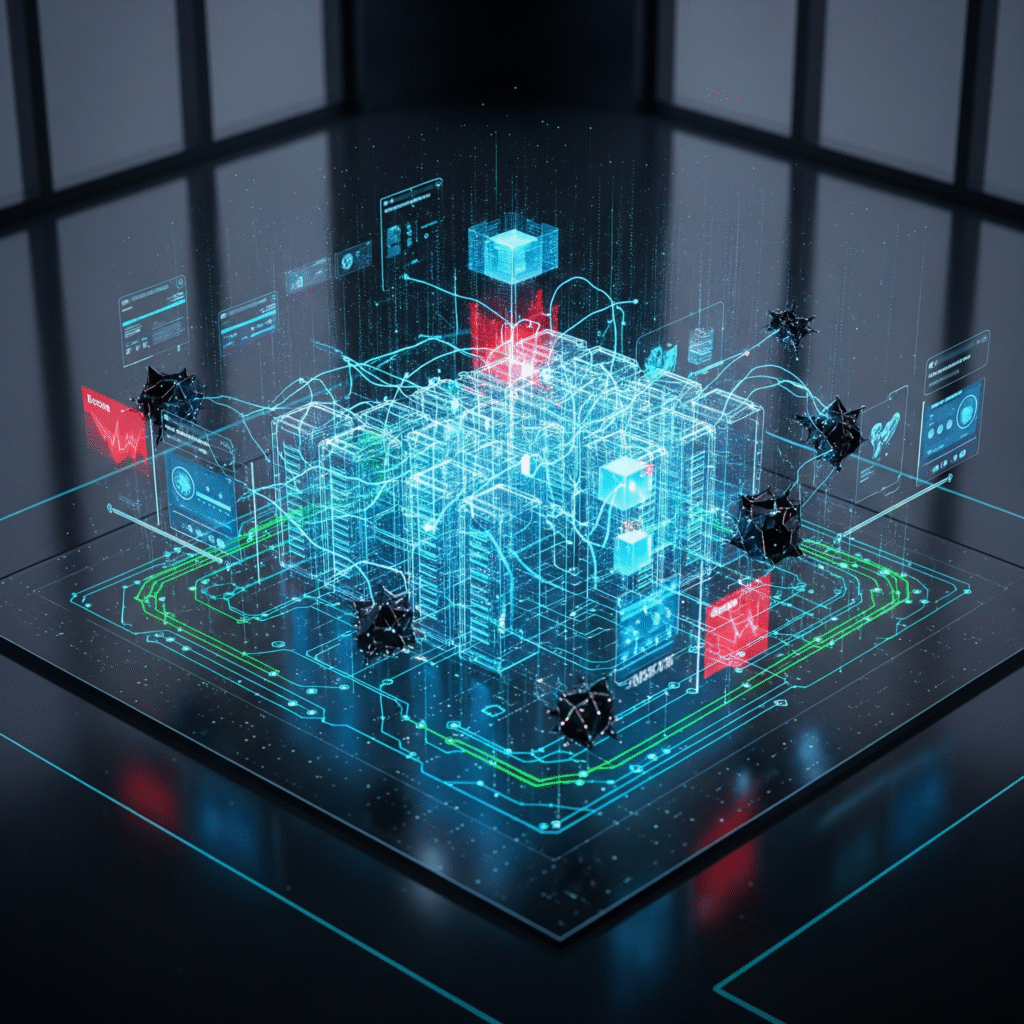Premium Biz Post – The world of cybersecurity is undergoing a transformative shift, and Trend Micro is at the forefront. The company recently made headlines by deploying an AI-powered digital twin technology in its security infrastructure—a move that’s turning heads in the cybersecurity community. But what exactly is a digital twin in this context, and why is it being called the next big thing in threat detection and cyber resilience?
Let’s explore what this new development means, how it works, and what it could mean for the future of cybersecurity as we know it.
What Is a Digital Twin in Cybersecurity?
Traditionally, the term “digital twin” has been used in the fields of manufacturing and engineering. It refers to a real-time, virtual replica of a physical system or process. But in cybersecurity, the concept is evolving.

Trend Micro’s digital twin acts as a dynamic, AI-enhanced virtual model of an organization’s entire IT infrastructure—networks, endpoints, applications, and even user behavior. This virtual environment allows Trend Micro to simulate real-world cyberattacks, analyze vulnerabilities, and predict possible breaches—before they happen.
Why Trend Micro’s Move Is a Game Changer
In a world where cyber threats are becoming more sophisticated by the day, traditional security methods are no longer enough. Signature-based detection systems and manual threat hunting have limitations. Trend Micro’s AI-powered digital twin offers a proactive rather than reactive approach to cybersecurity.
Key Features of Trend Micro’s Digital Twin:
- AI-Driven Threat Prediction: Uses machine learning to anticipate attacker behavior based on real-time and historical data.
- Real-Time Simulation: Tests security protocols under simulated attack conditions.
- Vulnerability Mapping: Identifies potential weaknesses across digital assets.
- Automated Response Planning: Generates response playbooks tailored to specific threats.
This holistic, data-driven model marks a new era in cyber defense where the system learns, adapts, and evolves—just like the threats it’s designed to combat.
How It Works: Inside the Digital Twin Ecosystem
Trend Micro’s digital twin operates on a multi-layered AI architecture that integrates with various enterprise tools—SIEMs, EDRs, cloud infrastructure, and even IoT devices.
- Data Ingestion: The system collects and analyzes data from across the IT landscape.
- Model Generation: It builds a digital replica, factoring in user behavior, asset configurations, and security protocols.
- Continuous Learning: AI algorithms constantly refine the model based on new threats and anomalies.
- Threat Simulation: It runs “what-if” scenarios using real-world attack tactics.
- Actionable Insights: Security teams receive intelligent alerts with context-aware recommendations.
The result? Faster detection, smarter mitigation, and reduced human workload in threat hunting operations.
A Response to the Rise in Complex Attacks
The timing of this rollout is no coincidence. According to Trend Micro’s 2025 Cybersecurity Forecast, advanced persistent threats (APTs), ransomware-as-a-service (RaaS), and AI-generated phishing campaigns are expected to skyrocket in the coming years.
The digital twin is designed to detect the subtle precursors of such attacks—from unusual lateral movements in a network to micro-changes in user behavior. This level of granular insight allows cybersecurity teams to act before real damage is done.
Real-World Use Case: Banking Sector Implementation
One of the first industries to test Trend Micro’s digital twin solution was the financial services sector, particularly large banks operating across multiple regions.
A pilot program revealed the following outcomes within 90 days:
- 60% reduction in time-to-detect anomalies
- 30% increase in patch deployment accuracy
- Significant reduction in false positives during threat alerts
According to a CISO of a participating bank (who remained anonymous), “The digital twin let us see our infrastructure from an attacker’s perspective. That insight was a game-changer.”
Challenges and Considerations
While the potential is enormous, there are some critical challenges to consider:
- Data Privacy: Collecting large amounts of internal data for simulation may raise privacy concerns, especially in regions with strict data regulations.
- Cost of Deployment: The setup and integration of a digital twin ecosystem can be resource-intensive.
- AI Bias & Accuracy: As with any AI-driven system, there is a risk of bias or overfitting if not monitored properly.
Despite these challenges, Trend Micro is confident that the benefits far outweigh the risks. The company is also emphasizing transparent data governance and responsible AI practices as part of its deployment strategy.
baca juga : “Turning Plastic Waste into Beautiful Weaving Crafts“
The Bigger Picture: Cybersecurity Reimagined
Trend Micro’s move signals a broader industry trend toward autonomous cybersecurity—systems that predict, prevent, and respond to threats with minimal human intervention.
Other leading cybersecurity firms like Palo Alto Networks, CrowdStrike, and SentinelOne are exploring similar technologies, but Trend Micro’s full-scale implementation puts them ahead of the curve.
In the next few years, we might see digital twins becoming a standard layer of cyber defense, especially for critical infrastructure and large enterprises.
What Experts Are Saying
Cybersecurity analysts are calling this a “milestone moment.” Here’s what some experts had to say:
Lisa Montero, Cyber Risk Advisor:
“This isn’t just another AI tool. It’s a digital battleground that organizations can use to prepare for real threats. It will change how we approach cyber defense strategy.”
Dr. Adrian Kwan, AI & Threat Intelligence Expert:
“The power of simulation has long been untapped in cybersecurity. Digital twins can bring us closer to predictive protection than ever before.”
Final Thoughts: A New Era Begins?
So, is this truly a new era in threat detection?
It certainly looks that way.
By combining AI, machine learning, and digital twinning, Trend Micro is not only reacting to the growing threat landscape—it’s redefining how we fight back. The shift from reactive defense to intelligent, anticipatory cybersecurity marks a critical turning point.



